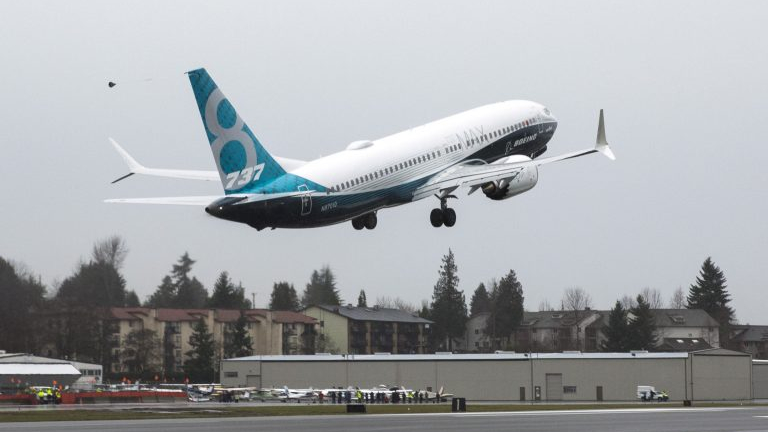
A Boeing 737 MAX 8 takes off during a flight test in Renton, Washington, January 29, 2016./Reuters
A Boeing 737 MAX 8 takes off during a flight test in Renton, Washington, January 29, 2016./Reuters
An attorney representing families of passengers killed in a Boeing Co 737 MAX crash in Ethiopia has said he will seek sworn evidence from a Boeing engineer who claims the company rejected a proposed safety upgrade to the 737 MAX because it was too costly.
The engineer, Curtis Ewbank, said the upgrade could have reduced risks that contributed to two fatal crashes in Indonesia and Ethiopia that together killed 346 people, according to two people familiar with the complaint.
Ewbank filed the complaint through internal Boeing channels after the March crash of Ethiopian Airlines flight 302, the sources said. The sources described the complaint to Reuters, but Reuters has not seen a copy of the complaint.
Managers rejected the proposed upgrade from Ewbank’s team of engineers, called synthetic airspeed, based on “cost and potential (pilot) training impact,” according to the Seattle Times, which first reported the complaint on Wednesday.
Robert Clifford, the lead counsel representing families of victims from the Ethiopian Airlines crash, said in an email the complaint raises fresh concerns about Boeing’s culture and whether the company placed too great an emphasis on cost and schedule at the expense of safety. He said he would take steps to depose Ewbank as quickly as possible.
Boeing declined to comment on the substance or existence of the whistleblower complaint. A Boeing spokesman said the company offers employees channels for raising concerns and has rigorous processes in place to ensure such complaints receive thorough consideration and to protect the confidentiality of employees who make them.
Ewbank did not respond to requests for comment.
Boeing is facing roughly 100 lawsuits over the Ethiopian crash on March 10 that killed 157 people on its way from Addis Ababa to Nairobi.
The lawsuits claim that design flaws allowed erroneous sensor data to set off the automated system and overwhelm pilots.
Source(s): Reuters